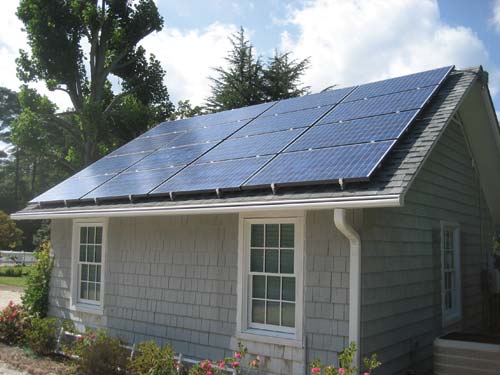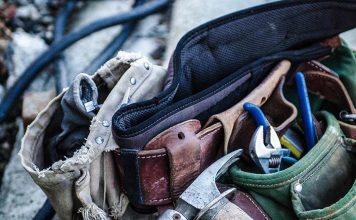 |
|
| Issue #140 • March/April, 2013 |
Several weeks ago I received a call from a woman in Florida complaining that they just had a power outage lasting several days and her solar system quit working. Although I had no idea who she was and never had anything to do with the installation of her solar system, she was very distressed and I wanted to at least point her in the right direction.
After a few questions it was clear that what she had purchased was a “grid-tie” solar system, and these systems must be “tied” to a working utility grid to operate. These systems do not have any battery backup capability, so their only function is to sell solar-generated power back to the utility grid, which offsets some or all of the metered usage for a given month. Any month the solar-generated power exceeds metered usage of the homeowner, the utility will credit this excess towards a future month when the utility demand exceeds solar generation.
Some states offer tax credits or utility rebates in addition to the federal 30% income tax credits for a solar system purchase. Some states also have very high electric rates which can make a solar grid-tie system economically justifiable when combined with these tax credits and rebates. Unfortunately, if you live in a state with historically low electric rates and no rebate programs, most likely your solar system purchase will never reach a break-even point.

Micro-inverter

Grid-tie inverter
Getting back to our Florida homeowner, either the person selling her system never made it clear to her or she didn’t understand the differences in solar system design, but no solar system will supply power when the grid fails unless it includes an inverter connected to a battery bank. In fact, in order to meet various codes and testing requirements, a manufacturer must demonstrate their grid-tie inverter will shut down immediately if there is a loss of grid power. This will prevent sending power onto a non-energized utility line that could endanger utility workers repairing equipment who would not expect the line to be energized from the opposite direction. These inverters must also demonstrate they have “anti-islanding” capability in order to receive their safety rating. Islanding involves several nearby homes on the same utility line with each having a grid-tie solar inverter.
It is theoretically possible for multiple nearby inverters on a non-energized section of power line to “see” the power feeding back into this isolated (island) power line from other nearby inverters and think the grid is still working. All grid-tie inverters must demonstrate they will not be fooled by any power back-fed from other nearby inverters and will remain off during a power outage. In other words, a “grid-tie” inverter cannot by design, and will not under any circumstances, continue to feed power back into the local utility grid or the home during a power outage.
Since grid-tie inverters do not require batteries, expensive battery wiring, or special battery room design considerations, a grid-tie system will cost less than a solar system that requires batteries. However, do not expect the lower-cost grid-tie solar system to provide emergency backup power during a power outage as it cannot and will not.
One of the newest grid-tie system designs uses micro-inverters. Unlike a typical wall-mounted inverter, a small DC to AC micro-inverter is attached to the back of each roof-mounted solar module. These are plugged into a special weatherproof 240-volt AC buss cable which ties directly into any nearby circuit breaker panel. While greatly simplifying system installation, micro-inverter systems still operate as a grid-tie system and cannot provide emergency backup power during a power outage.
At the opposite end of the solar system design spectrum is the “off-grid” solar system. This system design requires an inverter designed to operate using a large solar-charged battery bank and has absolutely no utility connection. If there are days or weeks of poor weather conditions when solar battery charging cannot keep up with the daily electrical needs of the home, a propane or diesel-fueled generator is started. Since the generator is only used to recharge the battery bank and then shut off, a major advantage of this system design is that the generator may only need to operate a few hours per week when solar output is low.
Since a truly off-grid solar system is the main, and sometimes only, source of electrical power for the home, these systems will typically include a custom-designed battery room full of very large and heavy batteries. However, with the addition of a generator, these hybrid system designs can now size the battery bank for only a few days of autonomy instead of five or more days typically required for non-generator systems. Although all solar systems can use the same solar modules, solar arrays intended for grid-tie applications usually have all solar modules wired in series to supply 500 or more volts DC to a grid-tie inverter. An off-grid solar array usually has the modules wired in parallel to provide somewhere in the lower 28- to 54-volt range depending on battery voltage.
Newer solar charger technology now allows using a higher solar array voltage than the battery voltage to keep wire sizes and installation cost down, but the National Electric Code still limits battery voltage in homes to 48-volt DC. This tends to keep the off-grid solar array voltage to much lower values than used for a grid-tie solar system.
Somewhere in the middle of these two extremes is the “grid-connected” solar system. Like the off-grid solar system, a grid-connected system will include a battery bank and an inverter designed to operate from battery power. However, since this system is also connected to the utility grid, most of the time the system is using the grid instead of the solar array to power the house and keep the batteries fully charged. This system will include a separate electrical sub-panel to supply backup emergency power to all critical loads, which typically include the kitchen outlets, refrigerator, most interior lighting, well pump, television, and any computer and Internet equipment. Except for homes with an extremely large solar system, this sub-panel will not supply power to any electrical heating appliances, air conditioner, electric hot water tank, electric stove, or heat pump. If these must be powered during a power outage, they will be connected to a second sub-panel supplied only by the utility grid and backup generator.
Many inverters designed for a grid-connected application can also sell power back to the utility grid just like a grid-tie system, but are typically slightly less efficient due to the additional battery charging components. However, most of my clients considering a grid-connected system that include batteries and a generator are more concerned with having a reliable source of backup power for extended periods when a generator-only system would soon run out of fuel. For these clients, any savings on their monthly electric bill from the solar array is considered a bonus to owning this system, but utility savings was not the main reason for their solar system purchase.

Grid-connected battery inverter system and generator sub-panel

Off-grid dual inverter system with AC and DC breaker panels

Battery-based inverter systems may require a separate battery room and heavy tray batteries.
Regardless of which system you may be considering, there are many options available. For example, most systems can include remote meters that indicate how well your system is performing and display system alarm or service messages. They can also display how much power the solar array is generating, and how much solar power is being sold back to the local utility. Metering equipment is also available for systems having a battery bank that display battery state-of-charge, rate of discharge, and when battery maintenance is required.
Solar buying decision
If you are looking for ways to reduce your electric bills, your first priority is to replace all lighting and appliances with those having the best energy savings ratings. Concentrate on those lights and appliances that operate the most hours per month, and don’t forget that heat pumps, air conditioners, and hot water heaters over 15 years old are much less efficient than today’s models, and can provide just as much savings on your electric bill as a solar system if replaced. Once you have done all you can do through improved efficiency, a solar system can provide additional savings each year for many years. If you are primarily concerned with the reliability of the utility grid or constant power outages, then a grid-connected solar system with both battery and generator backup may be just what you need.
There is now a national certification for solar installers that is both difficult to obtain and requires continuing education to maintain. Be sure to ask if your solar dealer has a North American Board of Certified Energy Practitioners (NABCEP) certification which will insure the highest level of solar installation qualifications and ethical business practices. Also keep in mind the United States is currently being flooded with very low-cost solar modules and inverters made in China. When comparing proposals between different solar system installers, if one proposal is substantially lower than all others, they most likely are using imported solar hardware. While this may be less of a concern for household products expected to last two or three years, product quality and knowing that the manufacturer and installer will still be in business during the entire life of your system is a concern when most solar systems are expected to last 25 years.
Final thoughts
An easy way to compare cost proposals from multiple solar vendors is to go on the Internet and do some research.
Jeff Yago is a licensed professional engineer and certified energy manager with more than 30 years of experience in the energy conservation field. He has extensive solar photovoltaic and emergency preparedness experience, and has authored numerous articles and texts. His website is www.dtisolar.com.
[weaver_widget_area id=’articles_about_yago’ class=’text3′]














